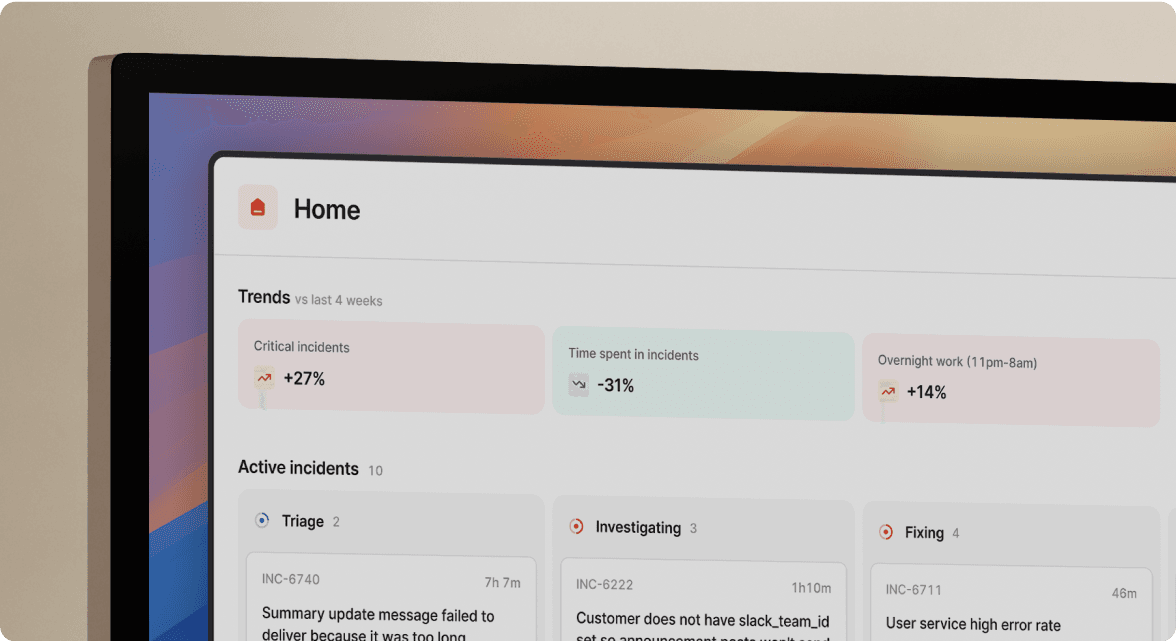Why clear success criteria are critical when evaluating incident management tools

Choosing the right incident management tool is more than feature matching. For site reliability engineers, it’s about providing your team with efficient workflows, clarity around roles during incidents, and integrations that match your operational realities, especially when things inevitably go wrong.
We've helped hundreds of companies migrate from their existing tooling over to a modern incident management platform. If I had to emphasize one critical step in making a successful tooling decision for any software category, it would be: define clear success criteria from the start.
Why clear success criteria matter
Walking into an evaluation or proof-of-concept (POC) without defined success metrics is like wandering in the dark. You’re easily distracted by shiny features or impressive interfaces while losing sight of your team’s needs. Clear success criteria provide everyone on the team a disciplined way to evaluate, ensuring strategic goals guide your final choice rather than features or interfaces alone.
The common trap: the “We’ll know it when we see it” mindset
Often, incident teams begin tool evaluations informally, basing decisions on initial impressions, attractive features, or even vibes. This approach seldom ends well. Without clear criteria, stakeholders become overwhelmed, lose departmental alignment, and usually discover crucial gaps in functionality only after investing heavily in migration or training.
The best tool doesn’t necessarily have the most bells and whistles. It’s the one that aligns closely with your team’s defined criteria and everyday realities.
A practical approach to defining clear success criteria
Here’s a concrete framework we've used to define and document criteria for incident management tooling decisions:
Step 1: Audit current functionality
Most incident responses revolve around clarity: who’s on-call, who owns actions, and how quickly the right responders get involved. Before changing tools, document exactly how incidents are handled today.
Key areas to review include:
• Incident routing: Evaluate how efficiently incidents are escalated and delivered to on-call personnel, ideally without versioning confusion or duplicated alerts. Understand the clarity your responders currently have around roles and responsibilities from the moment an alert fires.
• Integrations: Identify essential tools such as Slack, PagerDuty, or cloud providers (AWS, GCP, Azure). A strong incident management ecosystem integrates to reduce context switching, staying within tools your teams already actively use (like Slack) to manage incidents collaboratively.
• Automation and workflows: Document automation currently in place or required for future improvement. Are alerts automatically escalated at measured intervals? Does your tool automatically update customer-facing status pages or efficiently manage post-incident reporting activities?
• Reporting and analytics: Consider incident metrics that inform continuous improvement, such as Mean Time to Resolve (MTTR), escalation frequency, team health under stress, and insights derived from structured postmortems.
Helpful visual tip: Document a simple “before versus desired” feature matrix or process flowchart to visualize gaps clearly.
Step 2: Prioritize must-have versus nice-to-have criteria clearly
Consensus regarding must-have capabilities is essential. Clearly differentiating “must-haves” from “nice-to-haves” avoids evaluation paralysis and sharpens your focus.
Categories could be structured as follows:
• Must-have: Indispensable capabilities, the absence of which creates a critical gap for reliability or productivity. Examples: Slack integrations, structured on-call scheduling, reliable escalation chains, flexibility in workflow automation, transparent incident coordination.
• Nice-to-have: Attractive but optional capabilities that might enhance operations, such as convenient integrations with third-party status page providers, enriched reporting dashboards, AI-assisted summarization of incidents, or simplified visibility into provider service statuses.
Tip: Maintain a simple priority table or spreadsheet for clarity and alignment.
Step 3: Define precise evaluation tests or questions
Transform each success criterion from abstract concepts into actionable evaluations your team can perform during a POC.
For instance:
• Can responders quickly identify who’s currently on-call and their role in an active incident without switching contexts excessively?
• Does the tool integrate with your team’s existing communication platforms (Slack, Teams), so responders don’t need to jump between screens or applications?
• Are incident workflows simplified enough to automatically trigger stakeholder notifications, start calls or create conference rooms, and maintain a single authoritative situational record?
Standardized evaluation tasks or questionnaires ensure direct comparisons between solutions.
Step 4: Communicate transparently with vendors from day one
Your criteria should not be secret. Vendors appreciate clarity. We need it. It is an indicator of seriousness and preparedness. Explicitly communicating your defined success criteria upfront accelerates your evaluation process and adds meaningful context to vendor conversations.
Tip: Draft a shared evaluation spreadsheet or rubric accessible to internal stakeholders and optionally to vendor contacts involved in your evaluations.
Practical takeaway for SREs
For a fast, actionable approach in your next evaluation, follow this quick checklist:
✅ Conducted system audit (documented workflows, integrations clearly)
✅ Clearly differentiated “must-have” and “nice-to-have” criteria
✅ Documented standardized evaluation tasks or question sets
✅ Shared criteria transparently among stakeholders and communicated effectively with vendors
Why clarity matters now and later
Incident management decisions are rarely isolated tactical choices. They strongly influence long-term operational efficiency, team health, and organizational resilience. Defining success benchmarks early in your evaluation removes ambiguity, fosters collaborative alignment, and ensures broader and lasting adoption by your team.
Do yourself, your team, and your future self a favor. Resist evaluating without clear criteria.

See related articles
So good, you’ll break things on purpose
Ready for modern incident management? Book a call with one of our experts today.

We’d love to talk to you about
- All-in-one incident management
- Our unmatched speed of deployment
- Why we’re loved by users and easily adopted
- How we work for the whole organization



